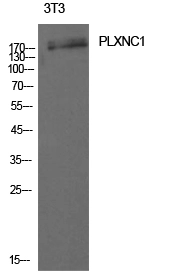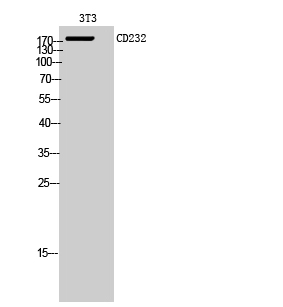
WB analysis of 3T3 cell lysate using GTX34127 Plexin C1 antibody.
Plexin C1 antibody
GTX34127
Overview
- SupplierGeneTex
- Product NamePlexin C1 antibody
- Delivery Days Customer9
- Application Supplier NoteWB: 1:500-1:2000. *Optimal dilutions/concentrations should be determined by the researcher.Not tested in other applications.
- ApplicationsWestern Blot
- CertificationResearch Use Only
- ClonalityPolyclonal
- Concentration1 mg/ml
- ConjugateUnconjugated
- Gene ID10154
- Target namePLXNC1
- Target descriptionplexin C1
- Target synonymsCD232; plexin (semaphorin receptor); plexin-C1; PLXN-C1; receptor for viral semaphorin protein; receptor for virally-encoded semaphorin; VESPR; virus-encoded semaphorin protein receptor
- HostRabbit
- IsotypeIgG
- Protein IDO60486
- Protein NamePlexin-C1
- Scientific DescriptionThis gene encodes a member of the plexin family. Plexins are transmembrane receptors for semaphorins, a large family of proteins that regulate axon guidance, cell motility and migration, and the immune response. The encoded protein and its ligand regulate melanocyte adhesion, and viral semaphorins may modulate the immune response by binding to this receptor. The encoded protein may be a tumor suppressor protein for melanoma. Alternatively spliced transcript variants have been observed for this gene. [provided by RefSeq, Jan 2011]
- ReactivityMouse
- Storage Instruction-20°C or -80°C,2°C to 8°C
- UNSPSC12352203
References
- PLXNC1 interference alleviates the inflammatory injury, apoptosis and extracellular matrix degradation of IL-1beta-exposed chondrocytes via suppressing GRP78 expression.Read more

